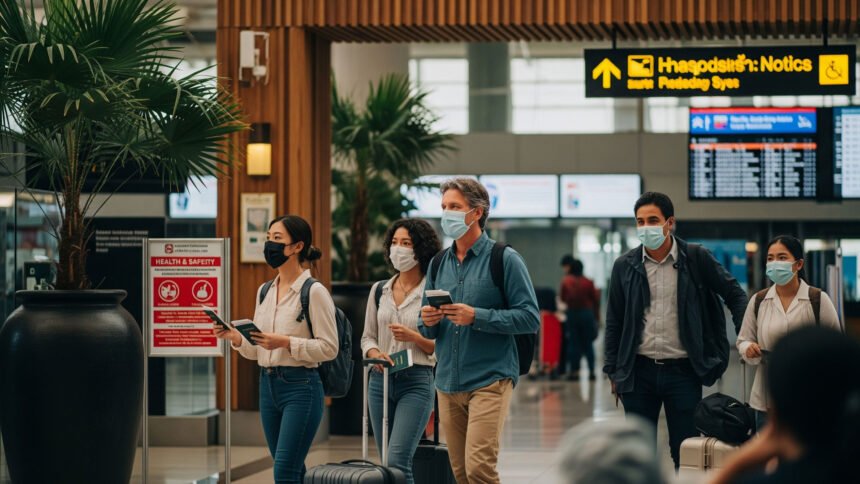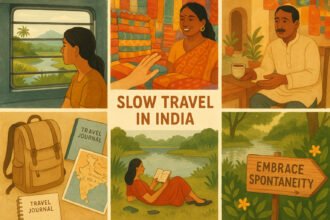Introduction: What to Know Before You Pack Your Bags
Southeast Asia Travel 2025 is back in full swing — but with a twist. While borders are open and tourism is booming again, many popular destinations like Thailand, Vietnam, and Indonesia are seeing localized COVID-19 surges, primarily from new Omicron sub-variants. But don’t worry — this isn’t 2020.
Countries are not locking down; they’re adapting. And so should you. Whether you’re a backpacker, honeymooner, or digital nomad, this guide offers everything you need for safe, seamless travel through Southeast Asia during this new chapter.
So here are few of the Southeast Asia COVID Travel Tips!
1. Entry Rules: Country-by-Country Breakdown
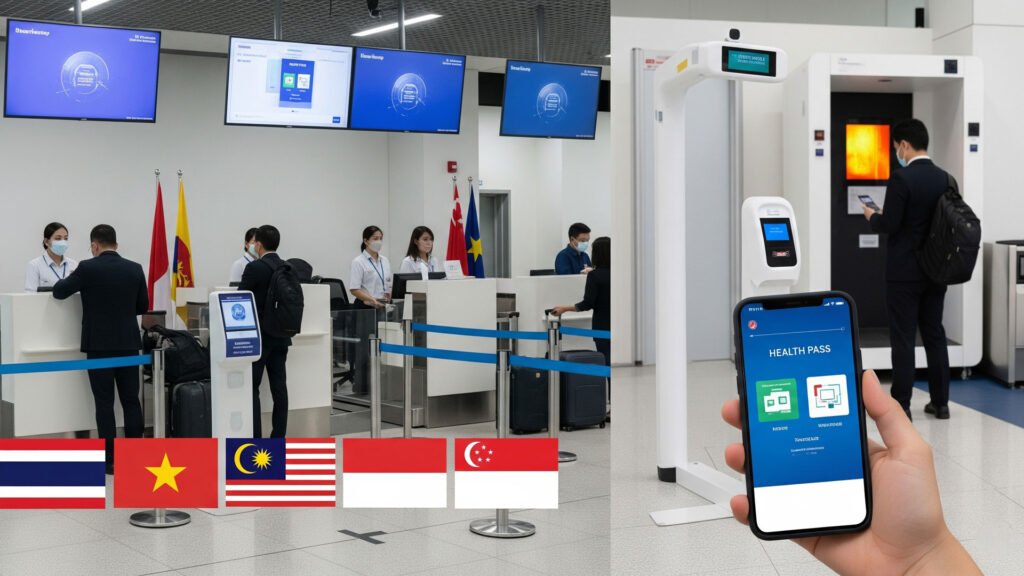
Here’s what’s currently required across the top destinations in Southeast Asia Travel 2025:
- Thailand: Fully vaccinated? You’re good to go. Unvaccinated travelers need an RT-PCR test taken 48 hours prior.
- Vietnam: No testing required, but random thermal checks and health declarations are enforced at major airports.
- Malaysia: No mandatory tests, but travel insurance (covering COVID) is strongly advised.
- Indonesia (Bali): Symptoms? You’ll be tested at entry. Proof of vaccination is needed for visa-on-arrival.
- Singapore: Fully open, but masks required in medical spaces.
Pro Tip: Visit the IATA Travel Centre for live updates before flying.
2. Travel Insurance: A Must-Have, Not a Maybe
No matter how careful you are, things can go wrong. In Southeast Asia Travel 2025, it’s common for travelers to fall sick due to sudden climate shifts, poor water quality, or yes — the occasional positive COVID test.
Choose an insurance policy that includes:
- Emergency hospitalization (including pandemic clauses)
- Quarantine accommodations
- Trip delays due to infection
- Evacuation coverage (rare, but still)
3. Low-Risk Destinations for Worry-Free Exploration
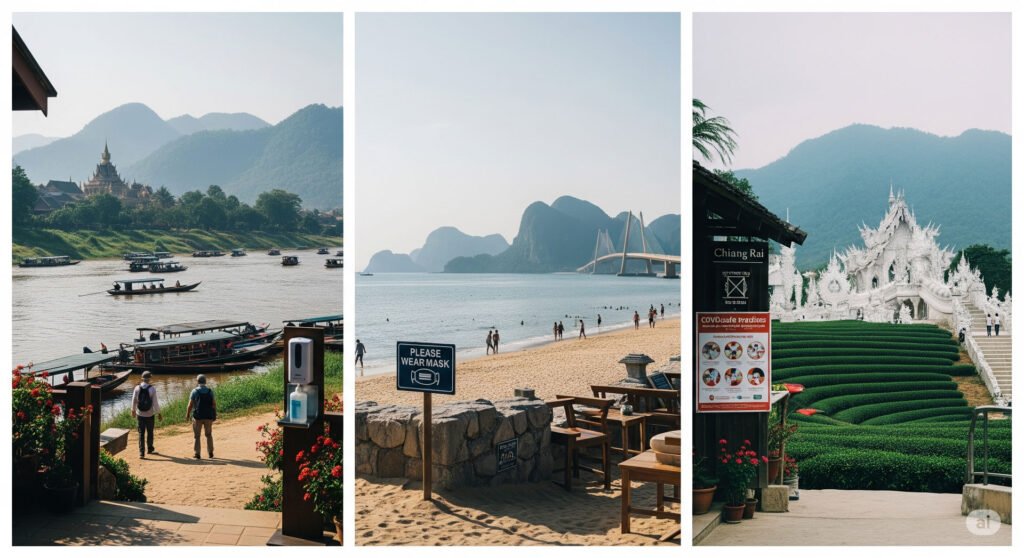
Planning to explore lesser crowded yet beautiful destinations? Southeast Asia Travel 2025 gives you more options than ever.
- Luang Prabang (Laos): Low crowds, natural beauty, and strict hygiene enforcement.
- Kuching (Malaysia): Perfect for wildlife and culture lovers — and very few tourists.
- Da Nang (Vietnam): Clean, coastal, with open-air markets and good medical facilities.
- Chiang Rai (Thailand): A peaceful version of Chiang Mai, minus the crowds.
4. Public Transport & Mask Mandates
Most public transport systems are fully operational. Here’s what you can expect:
- Bangkok & Jakarta: Masks recommended but not enforced.
- Singapore: Mandatory masks in clinics and eldercare facilities only.
- Manila: Masks still required on public buses and MRTs.
- Bali: Taxis are running normally; use Grab for no-contact bookings.
In general, wear a mask in crowded places even if it’s not required. Locals appreciate it, and it protects you from more than just COVID.
5. Where to Stay: Sanitization & Contactless Comfort
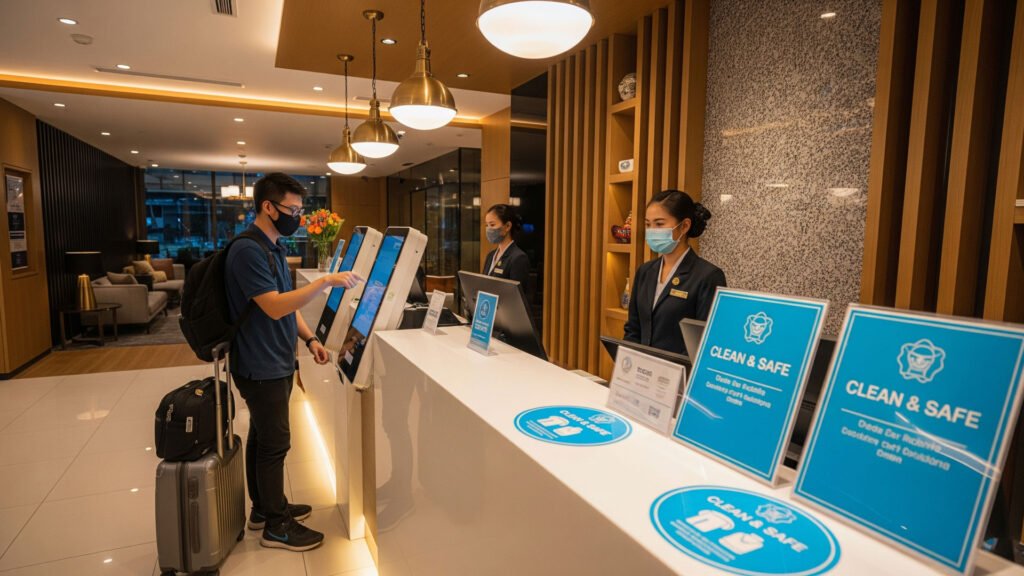
Hotels across Southeast Asia Travel 2025 have leveled up their game. Look for:
- “SafeStay” or “Clean & Ready” labels on Agoda/Booking.com
- Daily room sanitization and UV filters in AC systems
- Contactless check-in/check-out options
- Free masks, sanitizers, or even pulse oximeters in premium hotels
💬 Bonus: Many yoga resorts and wellness retreats in Ubud, Ko Samui, and Langkawi offer “open-air only” programs for maximum airflow and peace of mind.
6. Digital Nomads: What’s Changed in 2025?
Remote work continues to explode in Southeast Asia. Key updates for digital workers:
- Thailand: Long Stay Visa (LSV) now includes health insurance requirements.
- Bali: Indonesia’s digital nomad visa allows up to 1 year — no income tax for remote workers earning outside.
- Malaysia: Digital Nomad Pass covers coworking + health checkups.
- Vietnam: Hanoi & Ho Chi Minh City offer coworking hubs with daily sanitization.
Southeast Asia Travel 2025 is now the top region for remote workers after Europe, thanks to affordable living, great food, and stronger WiFi.
7. Local Apps That Can Save Your Trip
COVID-related travel may still involve last-minute changes. Download these apps:
- PeduliLindungi (Indonesia)
- MySejahtera (Malaysia)
- ThaiHealth / MorChana (Thailand)
- Bluezone (Vietnam)
- TraceTogether (Singapore)
These apps offer real-time alerts, self-assessment tools, and hotspot tracking — all invaluable during your Southeast Asia Travel 2025.
8. If You Test Positive While Abroad
It’s rare, but it happens. Here’s what to do:
- Contact your hotel or Airbnb host immediately
- Notify your travel insurer to arrange isolation accommodations
- Locate the nearest government-approved testing center
- Carry a digital copy of your passport and insurance
- Notify your embassy in case you need emergency help
Good news: Most countries now allow home or hotel isolation — you won’t be forced into state-run quarantine.
9. Health Etiquette: Travel Respectfully
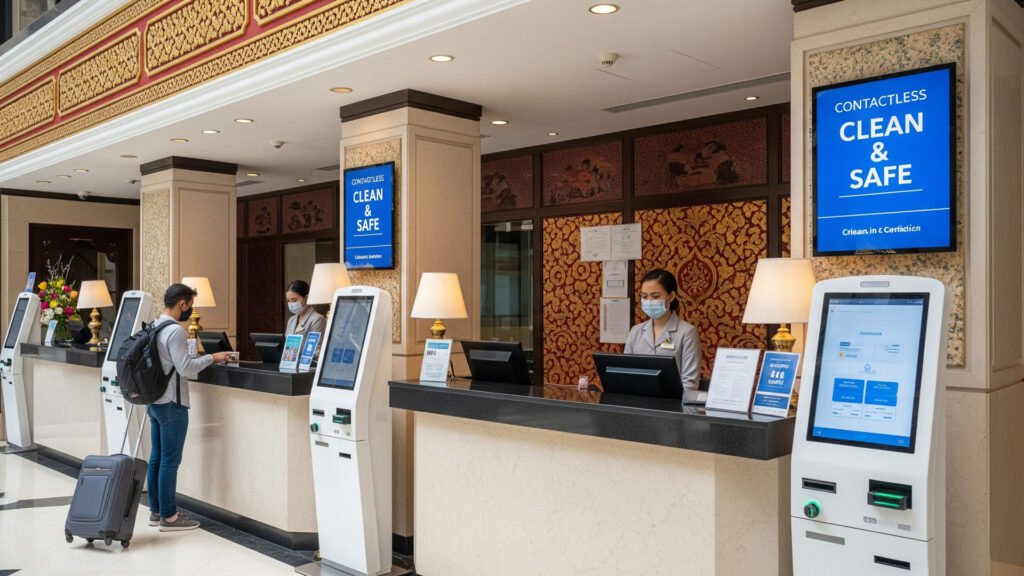
During Southeast Asia Travel 2025, small gestures matter:
- Wear masks in temples and public transport — even if locals don’t
- Use sanitizer before entering shops and food courts
- Avoid coughing/sneezing in closed vehicles
- Don’t argue with flight crew or customs staff enforcing COVID rules
Respect brings you smoother experiences — and goodwill from locals.
10. What to Pack: Smart, Not Heavy
Pack like a pro for Southeast Asia Travel 2025:
- At least 5–6 N95 or KF94 masks
- 2 small bottles of sanitizer (travel-size)
- Vaccination proof (digital & printed)
- Pulse oximeter + thermometer
- Travel-size soap + gloves
- Digital copy of passport, visa & insurance
- Small towel & alcohol wipes for public spaces
Pro Hack: Make a shared folder on Google Drive with all your documents — so you can access them anywhere, even if your phone is lost.
Final Thoughts: Travel Isn’t Cancelled — Just Smarter
Southeast Asia Travel 2025 is not shut — it’s smarter, more self-aware, and cleaner than ever. From digital health apps to remote visas and wellness upgrades, this region is becoming the template for post-pandemic travel.
So don’t cancel that dream trip.
Just travel with clarity, confidence, and compassion — and you’ll have a safe, unforgettable journey through one of the world’s most vibrant regions.
Internal Link Suggestion: If you’re interested in how India is using tech to shape the future of travel and defense, check out: India 6G Connectivity: Powerful Leap in Global Telecom





